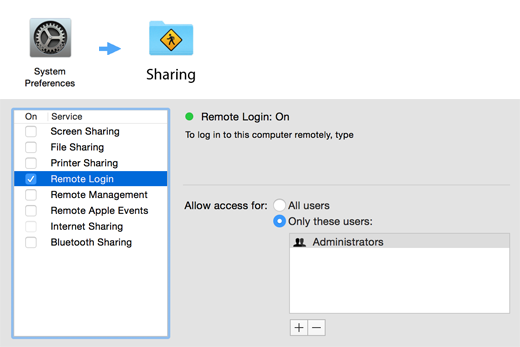Java is no longer installed with a OS X 10.11 El Capitan clean install, and you’ll find that after updating a Mac a prior version of JRE may no longer function.
You may come across when trying to use some particular applications or web content, “This application requires the legacy Java SE 6 runtime which is unavailable for this version of OS X.” error message, which means if you want to run that app you’re going to need to use an older version of Java.
If you do not need Java, you should not install Java. Java is, and always has been, the source of many security holes.
Here’s how you can install JRE (Java Runtime Environment).
Step 1. Open Safari and go to the Oracle Java downloads page and download the JRE .tar.gz version. You should end up with a file named something similar to jre-8u65-macosx-x64.tar.gz.

Dreamweaver not working on El Capitan!Java SE 6 not working and you can not downgrade?CS6 Not working, can't install Java SE 6 El Capitan?Not a problem.CS6 N. Originally released in 2015, El Capitan is the last version of Apple’s operating system designated as Mac OS X. Up until then, the operating system for Macs was known as OS X, but when Sierra (version 10.12) was introduced, Apple started calling it macOS to match the rest of its operating systems including iOS.
Step 2. Go to your Downloads folder and extract the JRE download or use Terminal to extract files:
Step 3. Open Terminal
Step 4. Edit the Info.plist file within to enable the JRE to be used from the the command line, and from bundled applications:
Step 5. Move the JRE folder to the correct location:
Type password on prompt.
Be sure you are in the correct directory (the JRE folder) when you issue this command, because it will move your current directory to /Library/Java/JavaVirtualMachines/!
Step 6. Create a link to add backwards compatibility for some applications made for older Java versions:
You should be done now, so try and open the application. If it does not work, some applications require legacy Java 6 to be installed.
You can have it installed without actually using it, however, it’s possible to trick the applications into thinking legacy Java 6 is installed, without actually doing so.

Step 1.Disable SIP (System Integrity Protection) in OS X El Capitan. Here is tutorial to disable and enable SIP.
Step 2. Trick some applications into thinking that legacy Java 6 is installed by creating two folders with the following commands in Terminal:

Step 3. Don’t forget to enable SIP again after creating these directories.
The first requirement to uninstall Java on Mac OS – you should have administrator privileges.
Second – you shouldn’t be afraid to use terminal.
This method works fine for any version of Java – 8, 9, 10, 11, 12, 13 or any other version.
Uninstalling Java on the Mac
- Click on Launchpad in the dock
- Search for Terminal and open it.
- Copy and paste commands to uninstall Java completely
If you want to remove a concrete version of Java, e.g. Java 9.0.1 you need:
Java Download Mac El Capitan
Check what Java versions are available:
Remove the corresponding folder with that version:
Java Se 6 Runtime Download For Mac El Capitan
That’s it! Java is successfully deleted.